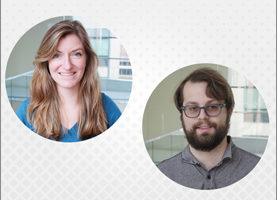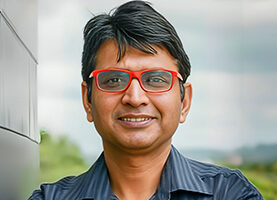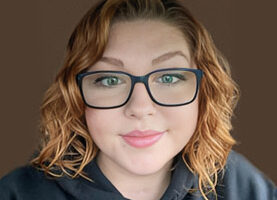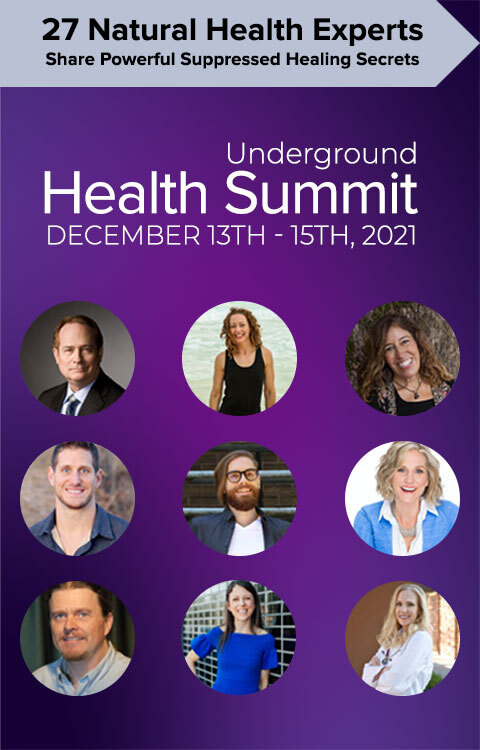
Support Us
Donations will be tax deductible
Catherine Freije and Cameron Myhrvold are working on a test for the Covid-19 virus that will provide faster results than what’s currently in use.
They explain
Cameron Myhrvold is a postdoctoral fellow in the Sabeti Lab and Catherine Freije is a Ph.D. student in Harvard University’s Program in Virology and is also working in the Sabeti Lab. These two virologists discuss an exciting step forward in rapid testing for the Covid-19 virus that involves CRISPR.
First, they discuss some general concerns of understanding how long the virus may linger and when exactly we can know when someone is contagion-free. They explain that if we could test a lot of people more rapidly, it would be really helpful step forward.
They tell listeners that their test is quantitative and can let you distinguish between infection levels that are really low or moderate versus high. They then explain the mechanics of the virus test: basically, they use a CRISPR process called Sherlock that picks a target with Cas13 and amplifies it for inspection through the cleaving process and reporter signaling.
They explain that this general process has been used for other viral infections like the Zika virus and Dengue, but must be specified for Covid-19. They add that they are still in the optimization phase, getting the test to work as well as possible. However, the turnaround for use will likely be accelerated by the FDA. They address other concerns about testing for the virus and challenges they may face.
For more, see the lab website: https://www.sabetilab.org/
Richard: Hello, this is Richard Jacobs with the Finding Genius Podcast. We have a new guest Cameron Myhrvolda who is a postdoctoral fellow in the Sabeti lab at the Broad Institute of M.I.T. at Harvard. Also, have Cherry Akerman who is the co-founder and CEO at Concerto BioSciences. We are here to talk about the new diagnostic method that involves CRISPR to fight epidemics. So both of you, thanks for coming.
Cameron: Yeah, thanks for having us.
Richard: If you don’t mind. Talk about the background of your work. What’s it about? What’s the methodology?
Cameron: Yeah, definitely. Sure. Do you want to start?
Cherry: Yeah, I can start. Basically the goal behind this project was to develop a way to do low cost, highly scalable, and multiplex diagnostics. So we want to be able to ask the question and what is making a person sick and be able to test for all of the possible things that they might be infected with at the same time and we in order to do that, we basically used to CRISPR-cas13 diagnostics inside of a microarray that allows us to construct all of these possible different detection reactions using cas13 at the same time and happy to talk more about the details behind that or the motivation or whatever is helpful.
Richard: Well, when you say when someone is sick, what does that mean?
Cherry: Yeah, the work that we were particularly focused on was looking at viral infections and that’s largely because of the focus of the Sabeti lab. Cameron, do you want to talk a bit about that?
Cameron: Yeah, definitely. So there’s many lab is really broadly interested in understanding viral infection in the lab came into this really through next-generation sequencing and has led lots of efforts to sequence a different viral infection, whether that’s during the Ebola outbreak, during Zika or more recently, that sort of where we come at this from. We’ve more recently been using that sequence information to try and inform the design of better diagnostics. That sequence information is really powerful and lets exactly what is causing a particular infection and many times different viruses that are related can cause really similar symptoms and so it’s hard to know do I actually have COVID or do I just have some other respiratory virus that is causing similar problems and the sooner you can know that information, the better. Especially if it’s in a situation like COVID where you’ve got a pandemic, but even more broadly, just sort of knowing what is making you sick.
Richard: So right now, to test whether someone is sick with COVID, is it being done just with the nasal swab and PCR? And if so, how is this going to help ascertain whether they actually a completely different a replacement method for the nasal swab or how does it fit in?
Cameron: So the sampling is similar and the standard sampling approaches now are different types of nasal swabs to figure out what is in that and people are typically using PCR based approaches to figure out what’s in the sample. But those are really limited. You typically are only testing for one or two different things at a time and that’s a challenge because there are many different respiratory viruses that could potentially be infected and so that’s something that really motivated us to develop. Carmen was to come up with a way to test samples for lots of different viruses at a time, but also to do that in a way that would make it easy to test lots of different samples and into it. It’s really a problem of scale. Its sort of one at a time approach that we’re taking at the moment is really limited and I think we’ve seen that over the past few months as it’s been really hard to increase the number of tests over time, even though it’s such a crucial problem and so, so much effort has been put into it. New technologies like this, we think in the future will make it easier to scale up testing to perform.
Richard: But again, how does this test work versus the current nasal swab and why is it better? What are some details about it?
Cameron: Yeah, sure and you want to take this one?
Cherry: Sure. So it does start with a nasal swab. So the way that you get a sample from a person would be some bodily fluid. It’s the overall method is pretty agnostic. But if you’re going to use it for COVID 19, you obviously want to be sampling from a body fluid that would be carrying COVID 19. So a nasal swab would be a very common way of doing that. After taking that swab, there’s a little bit of sample prep that has to happen and this is the same sort of sample. That you would do in order to conduct a downstream PCR detection and the thing that’s different about our method is that at that detection step, when you’re actually going to ask, OK, we collected the sample, we process a sample of what’s in the sample. We’re going to do two things that are very different from what is currently done now. So the first is that the detection is conducted in a volume that is very, very small. It’s a thousand times smaller than the volume that’s typically used for these reactions and that allows us to conduct many tests on the same amount of sample that you would collect from someone and it also allows you to use a lot less of the detection reagent, a lot less the crisper-cas13 reagents making this and making the tests much less expensive and the second thing that we’re going to do that’s really different from what’s done now is instead of using up energy, trying to first test for COVID and then test for flu and then test for RSV, we’re actually going to use randomness and we call it entropy and science to our advantage and we’re going to allow all of these reactions to set themselves up on their own. So we put all of the different patient samples into the device. We put all of the different detection reagents into the device and those detection reagents and samples can self-organize in a way that as long as we do enough statistical sampling, we get a really robust result for all of the possible tests that could be set up in the device and so in this way, we can conduct all of these different reactions at the same time instead of having to do them one at a time.
Richard: Well, if you have multiple reagents, is it a cross-reactivity between the reagents? Is it really less of a sample than before? Is there enough of a sample to get a statistically significant preference or predilection for one or the other?
Cherry: Yeah. So there are two. So you asking is cross-reactivity an issue and then you’re asking, is the result robust? How are we sure that we’re getting the right answer? And those are really important questions to be asking in diagnostic. So we prevent cross-contamination by actually making these reactions happen inside of nano-liter droplet. These droplets are like an emulsion. So it cuts kind of like salad dressing, like the way that you have water inside of an oil and each of those droplets is physically isolated from all of the other droplets and so if there is a detection reagent in one droplet that is trying to detect COVID, then it can’t actually communicate with the detection reagent that might be in the droplet next to it. That’s for influenza and so by separating these different reactions out into different droplets, we actually cut down on the amount of cross-border activity we see in this compared to other things that we do in bulk format by a lot and that’s a really strong advantage of this technology and then the second thing, you also it was robustness, and that’s really, really important. The way that we were able to accomplish robust results is by doing the statistical sampling many, many times. So every test on the chip is conducted at least 10 or if not 15 or 30 times, but at least 10 times and this allows us to make sure that when we say that something’s positive, it’s not that I just tested positive once. It’s that it tested positive like many, many times across the chip and so that statistical sampling is really important.
Richard: So it sounds like you have an array with multiple reagents to the like, let’s say its array of a thousand. Then you have 10 different reagents. Each one may have 100 that or cells in the array. So say you split up your sample, the tiny fractions, it goes into all the wells. That way you’re able to get robustness and separate durations of use very small amounts from the same sample.
Cherry: Yeah. That’s about right. So the number of wells per chip depends on the size of the chip. They’re the ones that we published most recently is about the size of a smartphone and it has one hundred and seventy thousand wells on it and it can conduct four thousand five hundred tests at a time and the reason that that four thousand five hundred number is so much lower than the hundred and seventy-seven was a number is because we want all of that statistical representation and because we’re using randomness to set things up, a lot of the things that are going to get set up are not going to be useful and then we want to make sure that the things that are useful are replicated many times.
Richard: What do you call the randomness? You’re just testing for many different things. What is random is have to do. I would think that it just allows you to test for more things at once.
Cherry: So the randomness is in how everything gets set up. So we’re putting in a set of patient samples and each of those patient samples is in a set of droplets. Each of the set of droplets is color-coded. So patients sample might be red pieces. A simple one might be red patient sample two might be blue and then we put in a set of detection reagents and each detection reagent goes in to drop droplets and each of those detection reagents is also color-coded. So the detection reagent for Cobbett might be green and the detection reagent for flu might be black and then we’re mixing all of those droplets in one. So now we have all the patient samples and all the detection reagents in a single two and they’re not interacting yet because those droplets are all separated from each other. Like the patient, samples are inside of specific droplets that carry a color and the color tells us which patient sample is in, which droplet or which detection region is in which droplet. So now what we want to do is take random samplings of pairs of droplets. So to do that, we flow the droplet pool over a microwell array that contains these hundreds of thousands of microwells and each microwell is the right shape to catch exactly two droplets. So when I say random, I mean that we’re not forcing any particular droplet to go into any particular well. It is just a random sampling from the pool and so 25 percent of the time you’re actually going to get a sample droplet with a sample droplet and that’s just loss like that. Well, is not useful because there’s no detection reagent. Yeah. There’s no detection reagent in that well and then twenty-five percent of the time we’re going to get a detection reagent plus the detection reagent and that well is just not useful. So what we’re looking for is the 50 percent of the time that we’re going to get a sample plus a detection reagent and then we actually cause once all the wells are loaded, then we take a picture of those colors to figure out where all of the different samples and different detection reagents are in the chip and then we apply an electrical pulse that merges the droplets that are only inside of a specific well and that’s what starts the reaction and then we can monitor those reactions over time. So if we see a specific well that lights up, that turns fluorescent, then we can go back and ask which patient sample and which detection reagent was in that well, and therefore, what is that patient testing positive for?
Richard: Is it too much to use two different reagents, feedstock in case you have a bad reagent?
Cherry: I’m not sure what you mean for a given reagent? What?
Richard: If you have a bad reagent feedstock, what if something’s wrong with it or it’s corrupted, that it could you will lose it. Could this test be scaled up to the point where so robust that you could have multiple reagent feedstocks? So you limit that from the equation?
Cherry: Yeah. So then if you think of this as a matrix where you have like one dimension, that is the number of detection reagents and you have another dimension, that is the number of patient samples, then the more detection, more different types of detection reagents that you put into the device, the fewer patient samples you’re going to be able to run out of time. Because like, your matrix is like more rectangular, I guess. So I think the only tradeoff with increasing robustness by, say, you want to have two or three different COVID tests on the chip. Yeah, you can definitely do that and that will increase the performance of the overall assay because you could ask, like, do all of them test positive or do two out of the three tests positive. But then you’re not going to be able to run patient samples because you’re trying to run more tests and there’s like a total number of tests that you can write overall. That makes sense.
Richard: What happens if you write for a given problem? Let’s say for COVID, you have 10 well, it’s possible that it could test for it only to show positive versus six so what do you do in those situations where it’s ambiguous?
Cherry: Yeah. They’re it’s really important to have strong prior data. So when you go through FDA approval and like you way and all of this clear regulations, you have to define at that stage what you’re going to consider to be a positive and what you’re going to consider to be a negative and that really has to do with the performance of the assay overall, the specificity and sensitivity requirements that you’re trying to me. So it really depends on that process that you went through with the FDA to say this is what counts is positive and this is what counts as negative and that’s one of the really important roles of regulation in diagnostics is making sure that everybody sets those thresholds in a way that’s honest and robust.
Richard: Well, that’s innovative in itself the way you’re doing it. But what about the testing itself, the bio-machine using what’s called CRISPR cas-13. I don’t know much about it. It is a test itself.
Cameron: Yeah, definitely. I can perhaps speak to that a little bit. So you can think, of course, 13 as really being a lot like the RNA targeting equivalent of cas9. So cas9 is this amazing programmable nuclease that you can target to a specific location on a piece of double strand of DNA using a guide RNA sequence allows it to bind to that particular site and then cut it and people have used cost known to do all sorts of things in the genome editing space, but also more broadly cas 13 is analogous to cas 9 and a lot of ways, except that it targets RNA rabbit and that’s what we take advantage of in in these diagnostic contexts is that once cas 13 binds to its target, it becomes activated and it starts cutting RNA and it becomes a very active nuclear and that’s really powerful when you combine that with a separate reporter RNA molecule that fluoresces went on and so what you’re basically doing is you’re turning that one specific binding event, that unusual event where the guide RNA binds to the door into many, many subsequent and that basically is a way of amplifying the signal and giving you all of this additional sensitivity and specificity relative to other nucleic acids and that’s why we’re so excited about, really the robustness of the underlying cas 13 detection reaction helped us a lot as we were trying to scale the reaction volumes down by a factor of about 10000 and that’s not always an easy thing to do. There are many other reactions where you scale them down like that, it becomes difficult to get a reliable readout. But this reaction is really robust to that and I think that really helped us as we were developing it.
Richard: OK, so this is a CRISPR cas 9 for RNA. So since COVID 19 is an RNA virus, that seems appropriate for this.
Cameron: Yeah, that’s right. I want to clarify that it’s not directly cutting the viral genome. There is amplification stuff that happens and that’s necessary for us to achieve the clinically relevant sensitivity and so what we typically do is extract nucleic acids from a sample reverse, transcribe that viral RNA into complementary DNA, amplify it by using multiplexed PCR, which is a standard nucleic acid extraction approach. But that amplification stuff is not specific. So there are primers in that amplification reaction for many of the different viruses that we might want to text and then we use specific crisper RNA in order to detect the individual virus or present that we are trying to.
Richard: You can’t just try to directly sequence RNA from various viruses. I mean, I guess you’d have to crack open or dissolve the caps. It’s to get at it. But is there another reason or another step why you can’t do that?
Cameron: You certainly cannot and there have been lots of efforts to do that around the world. I think at last count there were well over 10000 CORONA virus genomes then sequenced from the pandemic and sequencing is really a great way to learn all of the information that’s present with antivirals. The challenge is just that it’s a relatively expensive method. So it takes about one or two hundred dollars to sequence a sample and it takes a while to get that result. Typically a day or two and so if you want to perform testing at the scale that’s needed and we’re talking millions of tests per day in the United States tens of millions to hundreds of millions if you’re talking around the world, that’s just not feasible to do using sequence would cost too much money to win.
Richard: What’s the speed of which you have a sample, what’s the whole timeframe to give this whole testing process?
Cameron: Yeah, sure, do you want to talk more about the workflow?
Cherry: So as we mentioned, I think a little bit earlier. Following sampling, there is an extraction and amplification step. This multiplex PCR that’s pretty standard. All of that together typically takes about two hours and then downstream of that is the Detection and as it’s published in the paper we put out a couple of months ago, takes on the order of about five hours, depending on how long the incubation step is. So it’s about two hours to set up and then three hours to let the incubation for the detection happen and we actually recognize that that’s a little bit long. If you’re looking to do this in really high throughput and so one of the active areas of research in the lab right now is decreasing that time, both the time for setup and the time for the incubation. That’s the so the overall timeframe right now is around seven hours. But we definitely are working on.
Richard: to be really commercially viable, how fast does it need to be, and theoretically, what are you guys thinking? How fast could it be?
Cherry: Depends on your use case. So for a point of care, we typically say that that shorter is better almost always, because if you have a person who’s sitting in your doctor’s office wanting an answer or if you have someone out in the field who wants an answer, usually you want it to be minutes. I think they use cases that we see for this particular technology. Again, where that the sweet spot for the technology really is in scale, like scalable diagnostics and so it matters that there are a lot of patients that need to be tested all at the same time. So this is less about you and your home being testing yourself for something or one person going to the doctor. It’s more about transforming in these situations where we have hundreds of people, thousands of people, millions of people that all need to be tested and so we would imagine in this case, a use case would be at a clinical laboratory facility or in these sort of bulk testing situations and so in that case, yes, I think it’s really about the number of samples that you’re trying to put through a system at the same time.
Richard: Well, hopefully, there will be a tradeoff of we have 100 people sitting at a border or at an airport and they don’t want to let them go until they get the results of that COVID test for us. You don’t want them sitting there for seven hours and you want to be able to touch people quickly and get them through something that unfortunately is perfect, right?
Cherry: Yeah. Thank you. You asked about what the theoretical speed would be. I mean, we’re aiming right now for around three hours because that allows us to do that extraction amplification and detection and if we can get that even shorter, then that’s definitely where we’re going.
Richard: And there may be a speed to do it in a qualified lab versus a speed to do it out in the field. I can’t see that doing it out in the field would be nearly as good, as effective or as sensitive, specific, or fast as what you could do in the lab.
Cherry: It is really all about the engineering. I think there is definitely a world in which you could get field tests that are extremely sensitive and specific.
Cameron: Yeah, that’s right and I think that we usually think about those more deployable as being simpler probably detecting one or a small number of viruses. But if the technology is good enough certainly we could be more ambitious. I think it’s a matter of time before we’re able to certainly, there’s been a lot of progress in just the last couple of days.
Richard: Well, that’s great. So what’s next for this technology? What’s left of the path to scale it and deploy it for you guys? And what does the next year look like for it?
Cameron: Yeah, definitely. Yeah, I think we’re really excited to see where we can go with the technology and I think that means making the panels for different viruses, including things like respiratory viruses. I think that means doing all staying with patient samples and ultimately, we’d like to see this technology get out there in the world. That’s why we developed it and so really, it’s about charting that and it’s something I think we’re really excited to be a part of. It’s really wonderful to be able to technology like this isn’t just useful in a research setting like we’ve been using it so far. It actually has the potential to make a difference and so I think that’s definitely what we’re focusing to next year, as well as continuing to improve the technology itself because there always additional features that you might want or ways to make it even better than it is now. I think that’s true for any technology, and especially in this particular space where a lot of the components of this technology only came together pretty recently. If you look at the two core underlying parts of the technology, the cas 13 detection, and the underlying Microarray technologies, those really only possible to be using those as of a few years ago and this is the first time they’ve really been combined. So I think similarly there is a lot of that as a result of that. In many ways, there’s a lot of parties to really see.
Cherry: You asked about commercialization and so the company that we just co-founded, Concerto BioSciences, was co-founded because we want this microwell involved in technology to have an impact in the world and so there are a lot of different ways that we can imagine that happening, whether that’s through diagnostics or something else. But basically, what the company is doing is creating commercially viable versions of that technology and one of the areas that we’re exploring for applications is in diagnostics.
Richard: What’s the best way for people to learn about it?
Cherry: So we’re currently at the Harvard Life Lab as a student team. And so I think if you can find us online there and we have a link, then I’m more than happy to talk with anybody who’s interested in what we’re up to.
Richard: OK, well, very good. Both of you, thank you for coming. I really appreciate the sharing of time. Thank you so much for coming. I appreciate it.
Cameron: Thanks so much.
Podcast: Play in new window | Download | Embed

In this episode, we connect with Annie Chen, an author, therapist, consultant, and coach who uses neuroscience research to help clients navigate the complexities of relationships and emotional… Read More

In this episode, we sit down with Marc Brettler and Amy-Jill “AJ” Levine to discuss the Jewish faith, Rabbinic Literature, the New Testament, Christianity, Anti-Semitism, and more. How… Read More

As businesses emerge from tax season, many ask: How can I maximize profits and minimize taxes for next year? John Scott, an Anders CPAs + Advisors partner, sits… Read More

In this episode, Avi Kumar, the Founder and CEO of KUWARE Inc., joins us to discuss business marketing, growth, and advertising. KUWARE is a marketing and advertising agency… Read More

Something had been brewing for years in the heart of the Nightingale household: a fervent desire to chart a course away from reliance on conventional systems and embrace… Read More







Subscribe to Our Newsletter
Get The Latest Finding Genius Podcast News Delivered To Your Inbox